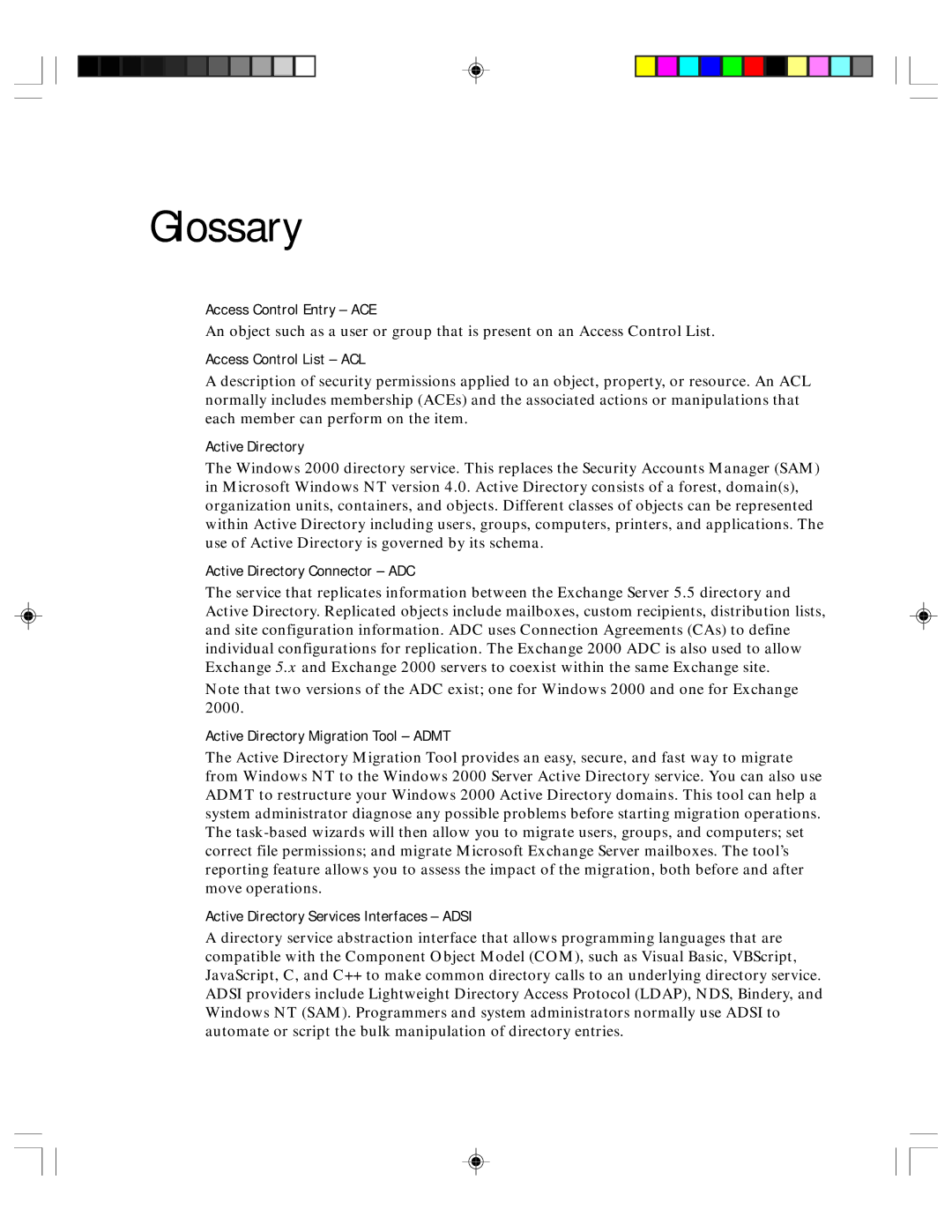
Glossary
Access Control Entry – ACE
An object such as a user or group that is present on an Access Control List.
Access Control List – ACL
A description of security permissions applied to an object, property, or resource. An ACL normally includes membership (ACEs) and the associated actions or manipulations that each member can perform on the item.
Active Directory
The Windows 2000 directory service. This replaces the Security Accounts Manager (SAM) in Microsoft Windows NT version 4.0. Active Directory consists of a forest, domain(s), organization units, containers, and objects. Different classes of objects can be represented within Active Directory including users, groups, computers, printers, and applications. The use of Active Directory is governed by its schema.
Active Directory Connector – ADC
The service that replicates information between the Exchange Server 5.5 directory and Active Directory. Replicated objects include mailboxes, custom recipients, distribution lists, and site configuration information. ADC uses Connection Agreements (CAs) to define individual configurations for replication. The Exchange 2000 ADC is also used to allow Exchange 5.x and Exchange 2000 servers to coexist within the same Exchange site.
Note that two versions of the ADC exist; one for Windows 2000 and one for Exchange 2000.
Active Directory Migration Tool – ADMT
The Active Directory Migration Tool provides an easy, secure, and fast way to migrate from Windows NT to the Windows 2000 Server Active Directory service. You can also use ADMT to restructure your Windows 2000 Active Directory domains. This tool can help a system administrator diagnose any possible problems before starting migration operations. The
Active Directory Services Interfaces – ADSI
A directory service abstraction interface that allows programming languages that are compatible with the Component Object Model (COM), such as Visual Basic, VBScript, JavaScript, C, and C++ to make common directory calls to an underlying directory service. ADSI providers include Lightweight Directory Access Protocol (LDAP), NDS, Bindery, and Windows NT (SAM). Programmers and system administrators normally use ADSI to automate or script the bulk manipulation of directory entries.
